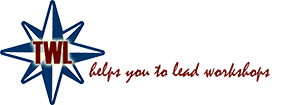Spoon feeding in the long run teaches us nothing but the shape of the spoon.
E.M. Forster (1879-1970)
British Author
Strategies for learning should be targeted at steering your own learning as well as designing your teaching and training sessions.
Every individual has their own strategies, but they ones they use may not necessarily be most the most effective for them. So, especially in the beginning it’s useful to experiment and play around with different strategies in order to find out what works best for you.
Generally, we can differentiate between cognitive, metacognitive and resources-related strategies.
Cognitive learning strategies
They deal with all aspects of information processing, i.e. how to organise (drawing sketches, marking keywords, excerpt etc.), elaborate (thinking of examples, creating analogies), verifying the argumentation line, memorising words (e.g. with mnemo techniques). The first step is to collect the learning material, before second you organise it.
Metacognitive learning strategies
Metacognitive learning strategies mean planning the sequence, supervising yourself, checking your progress — and adapting your learning strategy. This is pretty essential for success. As the Latin proverb goes, Repetitio est mater studiorum: Repetition is the mother of all learning. In the learning plan you must allocate time for repetition and testing. The German psychologist Hermann Ebbinghaus (1850—1909) has proven the necessity of repetition in his famous forgetting curve.
For trainings and workshops you should incorporate repetition as well as tests. For example, you can start each day with a ‘Yesterday’s Click’ (see Moderation). Thus, participants will retain information much better and for longer periods. Additionally, you can have further repetition by splitting a workshop into several units, e.g. a second weekend after a fortnight. Another good reinforcement tool is the ‘Letter to Myself’ (see Moderation).
Resources-related strategies
The learning strategies can split into inner and outer resources: inner resources are your time management skills, your attention and focus, while outer resources are the learning environment (at home, in the library, walking on the street), learning in groups and sources of learning like literature (see sources of learning).
For your learning plan you should be aware of:
- what to learn (collect and organise the material)
- where to learn (at home, library, bus…)
- how (excerpt, mark, file card box etc.)
- with whom (alone or in group — or both)
- when (your best attention span, block it in the calendar)
- Plan enough time for repetition and testing. Part of the strategy will be to supervise your progress and if necessary to adapt the plan.

